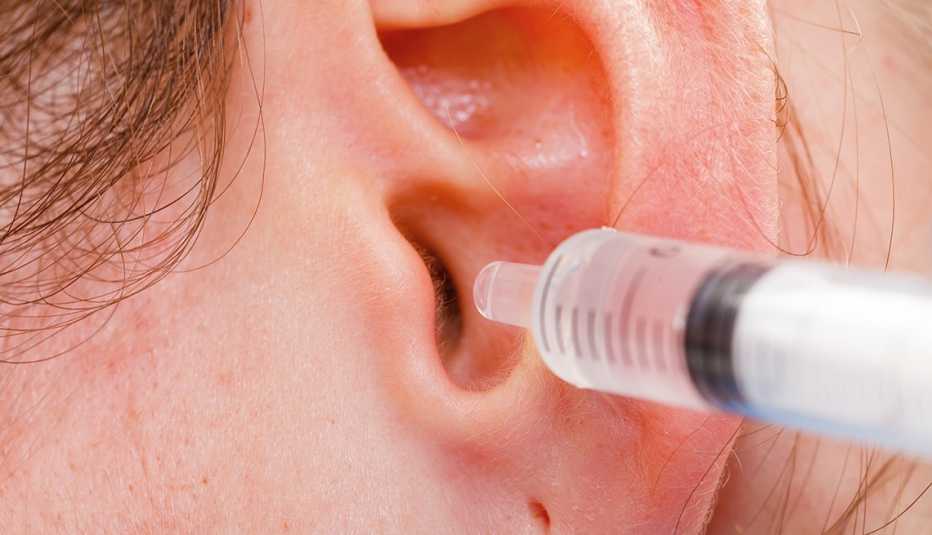Staying Fit


It may be something icky that you’d rather not think about, but earwax is a perfectly normal bodily secretion and a fact of life. Knowing how to control that gunk will allow you to hear better and prevent infections, earaches and more.
What earwax is and why we have it
So what, exactly, is this stuff? Well, earwax — the medical term is cerumen — is a waxy oil secreted by the tiny sebaceous and sweat glands that line the walls of the outer ear canal. A small amount of earwax regularly migrates from deep in the ear canal to the outside of the ear — acting as a kind of conveyor belt — carrying a lot of bad stuff along with it. “These secretions keep a flow going away from the eardrum toward the opening of the ear, catching dead skin cells, tiny hairs that line the ear canal and other types of microscopic debris along the way,” explains Mark Vaughan, M.D., a family physician and medical director at Auburn Medical Group in Auburn, California. Eventually, when the waxy mixture reaches the outside of the ear, it typically flakes off. Jaw movements, such as talking and chewing, help move things along.


AARP Membership— $12 for your first year when you sign up for Automatic Renewal
Get instant access to members-only products and hundreds of discounts, a free second membership, and a subscription to AARP the Magazine.
Earwax on its own isn’t bad. “When ears are making the right amount of wax, it’s actually the sign of a healthy ear,” says Anh Nguyen-Huynh, M.D., an ENT-otolaryngologist affiliated with Cleveland Clinic. Indeed, earwax acts as a protective lubricant that coats the ear canal, repelling water and preventing the skin from drying out. That waxy component is slightly acidic, so it “creates an unfriendly environment” for the bacteria and fungus that tend to develop in the moist, dark environment of the inner ear, says Yu-Lan Mary Ying, M.D., an otolaryngologist–head and neck surgeon affiliated with Rutgers New Jersey Medical School in Newark. In fact, the wax of diabetic people is less acidic, making them more vulnerable to ear infections.
Not all earwax is the same. People of African or European descent, for example, have wax that’s moist and gooey, while most Asians have dry, flaky earwax.
Why too much earwax can be a problem
Some people are more prone to producing excessive earwax. A waxy buildup is particularly common in older adults. According to the American Academy of Otolaryngology (AAO), approximately 1 in 20 adults experience a buildup of earwax, and it’s even more common in older adults. About 12 million people seek medical care for earwax problems each year.
“One factor has to do with the effects that aging has on our glands — including the salivary glands in our mouth, the mucus glands in our nose and throat, and the glands in our ears — whose secretions can change in consistency,” says Isaac Namdar, M.D., associate professor in the department of otolaryngology at Mount Sinai West Hospital. As we age, the secretions change in consistency. Earwax becomes drier and harder and migrates more slowly out of the canal, causing dead skin particles to collect. Certain conditions that produce dry, flaking skin, such as eczema, can also make it harder for the wax to exit.
What’s more, “it could be that the process of sloughing it off becomes more sluggish with age,” says Nguyen-Huynh. “Also, one of the things I notice in older patients is that many of them — men in particular — have a copious amount of hair growing in the ear canal, which could impede the movement of skin and ear wax. And in some, the outer ear canal becomes narrower and less firm with age, which can make it easy for wax to get trapped.”




































































More from AARP
6 Bad Habits for Your Hearing
Protect your ears, avoid these behaviors
Visit the AARP Hearing Center
More on over-the-counter hearing aids and other solutions for boosting hearing health
Experts Demystify Hearing Loss
A discussion on the crucial link between health and hearing, including advice on new OTC hearing aids